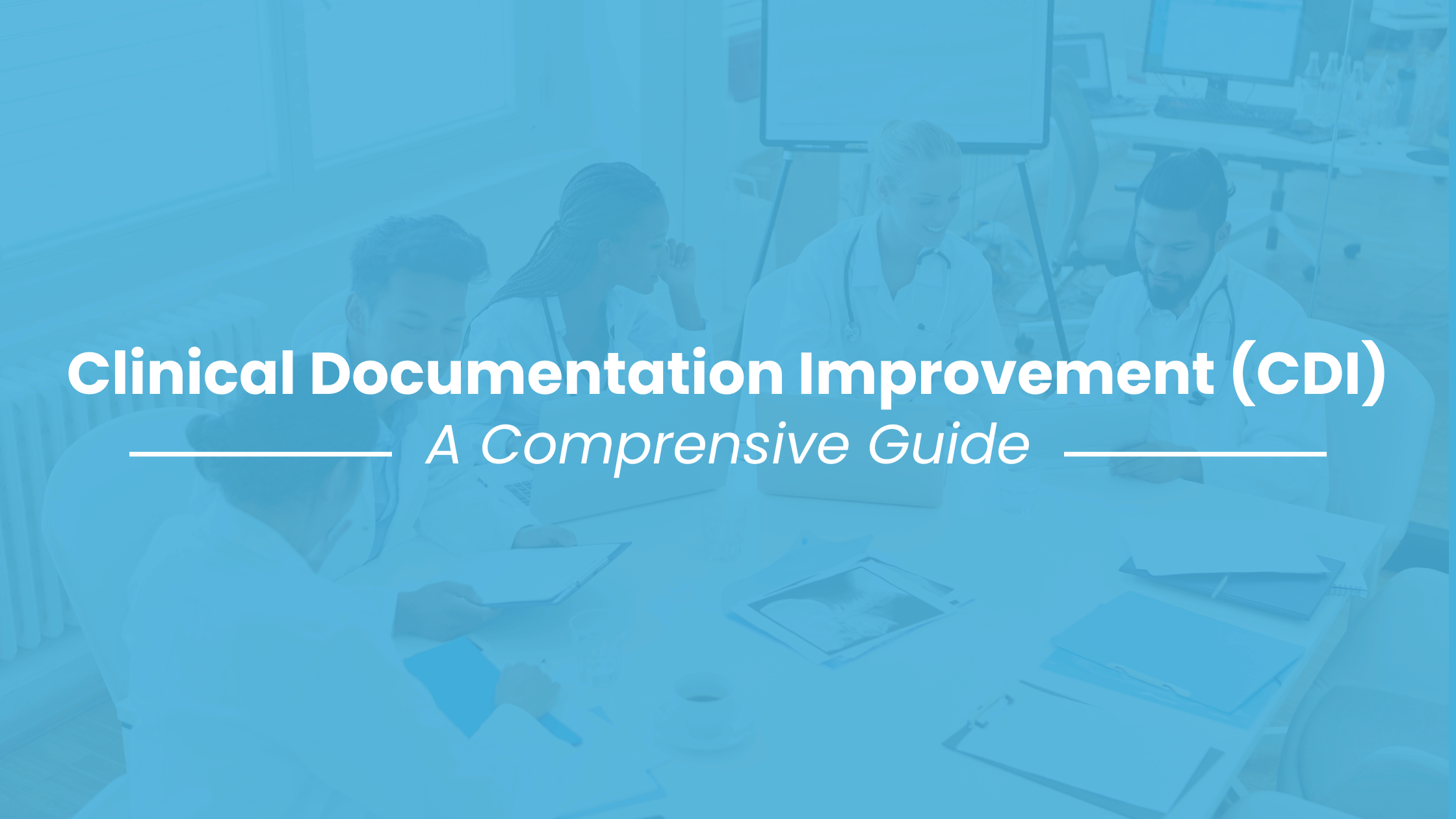CLINICAL DOCUMENTATION IMPROVEMENT (CDI): A Comprehensive Guide
Clinical documentation improvement (CDI) is a meticulous task that entails scrutinizing medical record documentation to guarantee its comprehensiveness and accuracy. This process involves a thorough examination of the disease trajectory, diagnostic revelations, and identifying any omissions in the records. A CDI specialist is proficient in both the clinical realm and the intricacies of medical coding.
What is Clinical Documentation Improvement (CDI)?
Clinical Documentation Improvement (CDI) enhances the clarity, accuracy, and completeness of records for clinical care by improving the documentation methods. With these strategies, medical professionals can ensure the highest quality of healthcare for patients while streamlining the workflow of hospitals and complying with regulations. This guide explains the importance of CDI as well as its variations in indicators of inadequate documentation and methods for successful implementation. These play a crucial role in improving health outcomes and operational efficiency.
Purpose of a CDI Program:
The Clinical Documentation Improvement (CDI) program is a planned procedure that is designed to create precise and complete medical records. Since the introduction of electronic health record (EHR) systems, the burden of administrative work has been greatly reduced on hospitals and healthcare providers by simplifying tasks associated with the patient’s care and the process of submitting claims.
Types and Categories Of CDI
Types of Clinical Documentation
Structured Documentation:
Structured documentation uses standard templates and forms to collect patient information uniformly across patients while making data analysis simpler.
Unstructured Documentation:
Unstructured documentation typically comprises free-text notes and narrative descriptions that offer considerable flexibility while creating difficulties when it comes to analysis and standardization.
Hybrid Documentation:
Hybrid documentation blends structured and unstructured approaches in order to produce comprehensive patient records.
Categories of CDI Programs
Concurrent (CCDI):
Concurrent CDI involves real-time review and improvement of patient documentation during patient care, providing timely corrections while increasing record quality.
Retrospective CDI:
Retrospective CDI is focused on reviewing documentation post-patient discharge to detect and correct any mistakes made initially.
Post-Discharge CDI:
Post-discharge CDI seeks to enhance documentation after patient departure, making sure records are precise for coding, billing, and long-term care.
Impact of CDI Program in Inpatient Setting
Clinical Documentation Improvement (CDI) can dramatically enhance the coding and billing process for inpatient facilities, leading to more accurate reimbursements. CDI’s financial impacts extend far beyond initial payments, as poorly documented claims could trigger audits with penalties and returns required from regulatory bodies; CDI therefore impacts two key areas in claims handling by increasing initial payment accuracy while simultaneously mitigating costly outcomes from regulatory audits.
How Clinical Documentation Improvement (CDI) Can Strengthen Patient Care?
An inpatient CDI program has more than just financial implications; it also greatly impacts overall patient well-being by improving individual medical records. Documentation plays a critical role in maintaining continuity and quality of healthcare facilities; working collaboratively on patient records between doctors and medical teams helps facilitate communication, potentially shortening hospital stays.
CDI programs also help decrease unnecessary readmissions by encouraging improved communication and care coordination between patients and their caregivers during discharge. Payers have recognized these benefits, creating programs such as the Hospital Readmissions Reduction Program (HRRP) to incentivize these benefits; working alongside HRRP, Centers for Medicare & Medicaid Services (CMS) evaluates various healthcare initiatives impacting patient health.
Outpatient Document Improvement Program Impact Analysis
Though CDI initiatives for outpatient settings may not generate as great financial returns as those implemented in hospitals, they remain crucial to provider offices. Similar to hospitals, outpatient facilities rely on regular revenue cycles to cover expenses and salaries; however, claim denials or revisions due to incorrect code submission can delay timely payment for services rendered, with comprehensive documentation for clinical purposes being the main goal.
Improve Patient Record Quality
Clinicians face two primary objectives in managing their practice; diagnosing patient issues and providing appropriate care. Clinical documentation (CDI) serves as the universal language essential for effective communication among network administrators, healthcare providers, patients, care pathway navigators, and care pathway navigators. Improved CDI also facilitates smoother communications with patients to ensure they receive necessary care throughout their health journey; in turn, this creates positive outcomes for the practice as smooth communication reduces chances of miscommunication or patients getting lost along the way.
Conclusion
In conclusion, Clinical Documentation Improvement (CDI) programs play a vital role in improving medical record accuracy and completeness both in inpatient and outpatient settings. Outpatient programs play a pivotal role in maintaining revenue cycles and guaranteeing payment for services rendered on time. While inpatient programs usually focus on improving coding accuracy and financial outcomes, outpatient programs play a similarly vital role by maintaining revenue cycles and assuring prompt payment of services provided.
CDI programs also assist healthcare facilities in improving patient care by improving communication among healthcare providers and strengthening patient records. When implemented effectively, healthcare facilities can use CDI strategies to optimize patient outcomes, streamline administrative processes and uphold standards of excellence in care delivery.

